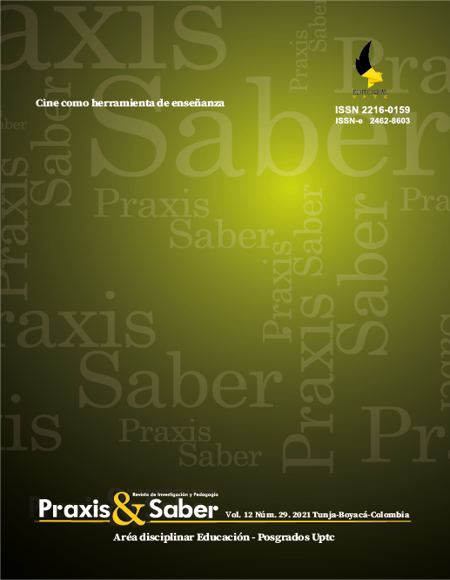The drifts of cinematic thinking as stimuli for the teaching of philosophy

Abstract
The article considers cinema as a way of thinking. It explores three modalities of the cinema to develop contributions to the teaching of philosophy. The first modality is based in classical cinema. It is connected with an instrumental perspective of the use of cinema in teaching, aiming either to enhance logical-rational skills, or to constitute a critical tool of instrumental reason. The second modality corresponds to the explorations of modern cinema. This thinking is linked to the modalities of work in philosophy education synthesized in the concept of "minor pedagogy" (Gallo, 2003). Finally, the digital cinema thought allows to incorporate the realization of audiovisuals as a working method in the philosophical class. In the first place, the aesthetic-political foundations of this way of working are developed, appealing to the type of circulation that images have in contemporary culture. Then, the experience of a video-minute workshop is systematized in which we worked from that perspective.
Keywords
cine, enseñanza de la filosofía, enseñanza audiovisual, educación, pensamiento
References
Arendt, H. (1995). El pensar y las reflexiones morales. En De la historia a la acción (pp. 109-137). Paidós.
Bacon, F. (2011). La gran restauración (Novum organum). Tecnos.
Badiou, A. (2004). El cine como experimentación filosófica. En G. Yoel (coord.), Pensar el cine 1. Imagen, ética y filosofía (pp. 23-90). Bordes-Manantial.
Baudry, J. (1974). Cine: los efectos ideológicos producidos por el aparato de base. Lenguajes: Revista de Lingüística y Semiología, 1(2), 53-67.
Benjamin, W. (2003). La obra de arte en la época de su reproductibilidad técnica. Ítaca.
Bordwell, D. (1996). La narración en el cine de ficción. Paidós.
Buck-Morss, S. (2005). Walter Benjamin. Escritor revolucionario. Interzona.
Deleuze, G. (1984). La imagen-movimiento. Estudios sobre cine 1. Paidós.
Deleuze, G. (1986). La imagen-tiempo. Estudios sobre cine 2. Paidós.
Deleuze, G. (1995). Conversaciones. 1972-1990. Pre-Textos.
Deleuze, G., & Guattari, F. (1978). Kafka. Por una literatura menor. Era.
Deleuze, G., & Parnet, C. (1988). El abecedario. Escafandra.
Descartes, R. (2004). Discurso del método. Colihue.
Dostoyevski, F. (2017). El idiota. Ex Libris.
Dubois, P. (2001). Video, cine, Godard. Libros del Rojas.
Duras, M. (1997). El hombre atlántico. En Duras, M., El cine del desgarro (pp. 41-64). Banda Aparte.
Eisenstein, S. (1998). Reflexiones de un cineasta. Lumen.
Eisenstein, S. (1999). Aproximación dialéctica a la forma del cine. En Eisenstein, S., La forma del cine (pp. 48-64). Siglo XXI Editores.
Galazzi, L. (2012). Mirando conceptos: el cine en la enseñanza de la filosofía. Libros del Zorzal.
Gallo, S. (2003). Deleuze & Educação. Autêntica.
Gorin, J-P., & Godard, J-L. (1972). Letter to Jane [Película]. Grupo Dziga Vertov.
Heidegger, M. (2005). ¿Qué significa pensar? Trotta.
Hitchcock, A. (1954). Rear window (La ventana indiscreta) [Película]. Rudin/Paramount.
Longino, H. (1998). Sujetos, poder y conocimiento: descripción y prescripción en las teorías feministas de la ciencia. Feminari, 11(21), 21-29.
Rozo-Gauta, J. (1997). Espacio y tiempo entre los muiscas. El Búho.
Schwarzböck, S. (2017). Los monstruos más fríos. Estética después del cine. Mar Dulce.
Weir, P., & Rudin, S. (1998). The Truman Show [Película]. Rudin/Paramount.
Zambrano, M. (2007). Filosofía y educación. Manuscritos. Ágora.
